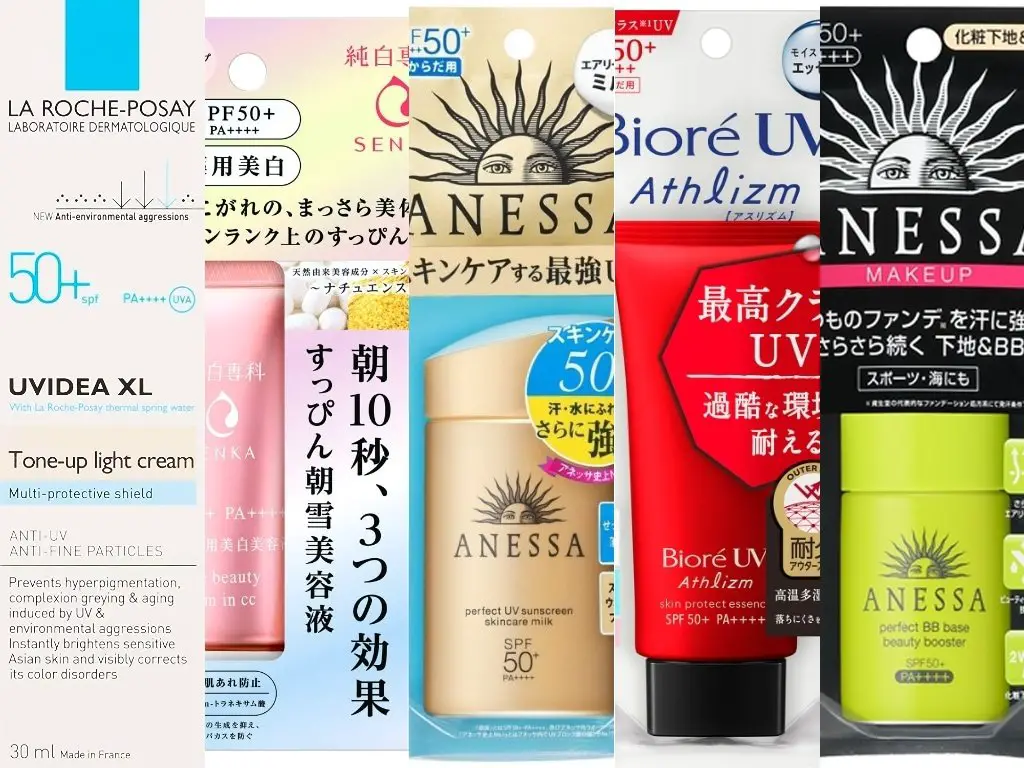
I’ve posted my annual Japanese sunscreens ranking on the main site for the past 8 years. For new readers, this was where I picked my top 5 SPF50+ PA++++ sunscreens that were released that year. Writing the post on it each year felt more and more a bit of a hot potato if truth be told. I’ve always tried to choose a wide variety of formulas to cater for a wide audience, but I’ve come to the conclusion that my picks — based on feedbacks — were largely neither here nor there. It’s also likely that you enjoy reading this annual feature, but what I’m trying to say is that what I think it’s good may be the complete opposite for you.
Best intentions get lost in translation can have real, potentially dangerous consequences. It just makes me shudder when I see comments out there with people getting sunburnt at the ballpark using one of my ‘top pick” sunscreen because they didn’t comprehend what “easy-on, easy-off formula” and “everyday wear” entailed.
To cut a long story short, I’ve scrapped my annual top 5 sunscreen picks from the main site altogether — but, it isn’t gone for good. Since I’ve been making it a regular thing to share a list of my top 5 of a subject on my personal blog, I thought I’d post about sunscreens too. In other words: it’s still here, but without the need for justification of each product nor the constant disclaimers.
So these are my personal top 5 most-used sunscreens. They aren’t necessarily my favourites, but for one reason or another, I’ve been reaching for them the most.
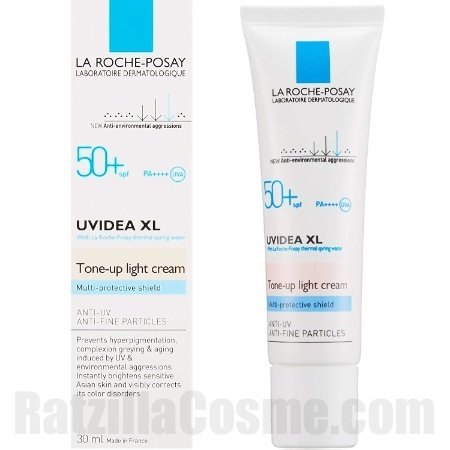
I quite like the Asia-exclusive La Roche-Posay UVIDEA XL Tone-up Light Cream (launched last year in March) for everyday wear. It’s a moisturiser, untinted complexion enhancer, and sunscreen all in one. It gives a gorgeous, almost ethereal sheen to the skin that brightens and blurs light skin tone beautifully. All in a rather elegant lotion-cream that’s hydrating but not greasy, lightweight but not drying, scent-free, and comes in an easy-to-use pump-action tube. La Roche-Posay says this is for normal to dry skin, and I’d agree with this recommendation.
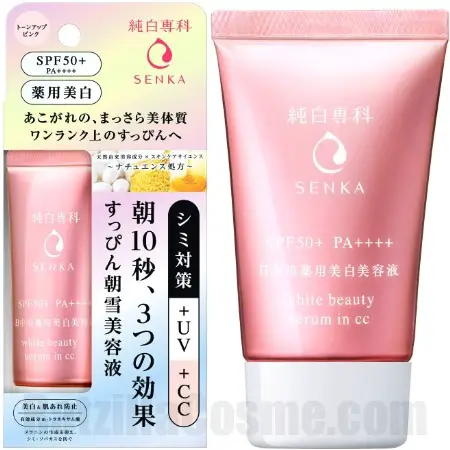
I’ve been wearing Junpaku Senka White Beauty Serum in CC a lot on casual days (i.e. when I don’t have anything scheduled but still need to leave home). It’s a brilliant multi-tasking cream for non-oily skin. Junpaku Senka have formulated this with hydrators, excellent UVA and UVB protection, and tranexamic acid. I like that there’s something properly helping with moisturisation, protection, and correction of discolourations — as well as complexion enhancer. The lightly pink-tinted cream lifts the skin tone and enhances the complexion. You have something superficial to instantly improve skin tone and then something a little more long-term with the skincare.
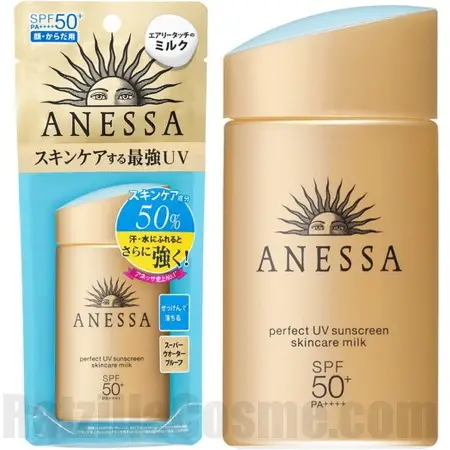
Regular readers will be no strangers to Anessa Perfect UV Sunscreen Skincare Milk. It was the sunscreen I relied on for sunny days outside when it launched last year. And now that I’m using sun-sensitising products, it has become my ‘default’ sunscreen. I’ve written a full review of it so I won’t bore you by repeating all the nitty-gritty details — do have a read (linked above) if you haven’t already!
(For those who have seen my recent Instagram stories and were wondering: I much prefer this over the new La Roche-Posay Anthelios Shaka Fluid.)
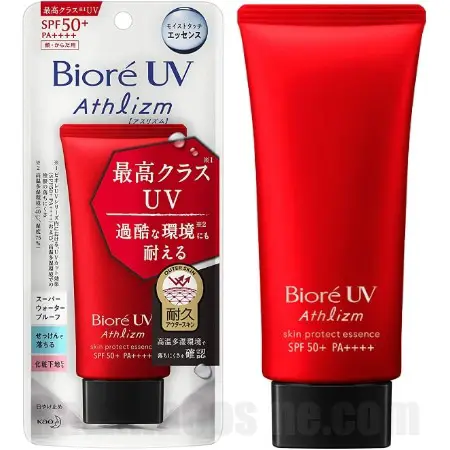
Biore UV Athlizm Skin Protect Essence is lightweight, long-wearing, and with no sticky residue nor sunscreen-y odour. It’s like the ultra famous Biore UV Aqua Rich Watery Essence, but formulated to stay put in high heat and humidity. I’m not an outdoorsy person at all — if I were, this wouldn’t be what I’d use for a day hike — but it serves me quite well for running around the city in the (early) summer’s heat. I’ve linked my full review on it.
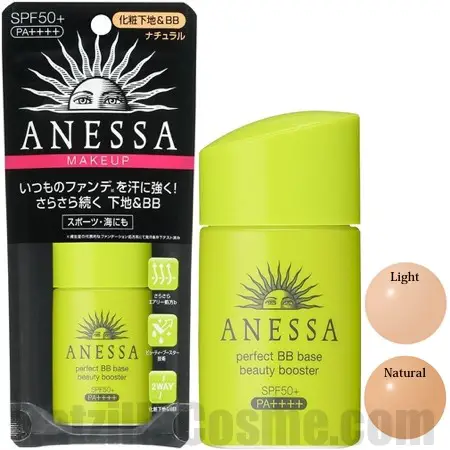
Anessa Perfect BB Base Beauty Booster is a tinted makeup base fluid with sun protection build in, and it’s the SPF product I reach for the most during summer if I wake up late and have less than 10 minutes to get out the door looking pulled-together. I’d use a hydrating mist follow with a creamy serum and then apply this as sort of an “all-in-one”. It’s weightless, with sheer-ish yet buildable coverage and a beautiful silky feel. If I lay this down generously, skin looks perfected but still look believable and fresh. And this really is long-wearing (it’s resistant to water, sweat, and sebum!). I’ve worn it out for 12+ hours on a number of occasions and it has stayed put extremely well.
Hey Ratzilla, why do you prefer the Anessa Milk over the Shaka Fluid? 🙂
It’s noticeably shiny and greasy compared to the majority of the Japanese sunscreens I’ve tested. It claims to be ultra-resistant to water, sweat and sand, but I don’t see how this could be true in real life, especially the latter two. It transfers onto everything that my skin touches (and leaves terrible stains on clothes). And the odour doesn’t dissipate at all. The Shaka Fluid is the most pleasant European sunscreen I’ve tried to date, but it still looks, feels, and smells like I’m wearing sunscreen so it’s not something I’d want to use on a regular basis. I personally don’t feel comfortable relying on it for sports or outdoorsy stuff either since it comes off so easily.
For me, Anessa is significantly cheaper and meets my needs and preferences far better.
Ah okay, well that’s interesting. Thank you! I find the finish of the Shaka Fluid to be absolutely invisible and matte, at least in the first few hours. Mind you, I seriously over-apply.
I do find the Shaka Fluid to be invisible and matte, but only when compared to other European sunscreens (at least the handful that I’ve tried). While there isn’t a white cast, there’s still a distinguishable sunscreen-y sheen and film to it when applied generously.
What I’ve been wondering is what the PPD of the Anessa Milk is. Although I get the idea that even Shaka Fluid’s incredible PPD 46 would still be classified as PA++++ in Japan, I am sure none of the Japanese sunscreens have a PPD of much higher than 17. After all, why would they compromise the texture and feel on the skin to reach high UVA values? They would still be marketed as PA++++.
That’s pure speculation.
Shaka Fluid’s impressive PPD46 value is a blink-and-you-miss-it info. It’s neither printed on the bottle nor the outer packaging, which I find extremely odd. Why aren’t they include this info (like the SPF value), if it’s tested to be true? It isn’t mentioned anywhere on La Roche-Posay’s French website either.
Regardless, very high PPD isn’t the be-all and end-all of sunscreens — the overall formula matters just as much, if not more. If a sunscreen doesn’t agree with your skin or you simply can’t stand it, then it’s a moot point whether it has superior UVA protection or not. Also, keep in mind that sunscreen shouldn’t be rubbed in and it needs to stay put on your skin in order to be protective. If it’s sliding around, transferring off, or you’re rubbing it in, you’re not going to get anywhere close to the labelled protection.
I don’t want to be rude or anything, but the PPD of 46 is clearly true. Otherwise, it wouldn’t be featured in a lot of the official La Roche Posay’s advertising videos for the Shaka Fluid. And it has been confirmed by the customer service at least in Germany. AND it is feature on the UK website: https://www.laroche-posay.co.uk/anthelios-shaka-ultra-light-spf50
“Clearly true”? ” La Roche-Posay and L’Oreal aren’t above making false claims. Many years ago, they have been sued by Johnson & Johnson over false PPD claims!
I find it quite odd that its PPD value is not printed on the packaging (where it matters most). To me, that’s the same as advertising to be SPF50+ yet it’s nowhere to be found on the actual label when you purchase the product. If this was an Asian brand, I’m certain a lot of people will be claiming false advertising (even if it’s true).
PPD46 seems to be UK specific. It’s not on the official French promo videos for it. It’s nowhere to be found on its French website https://www.laroche-posay.fr/produits-soins/anthelios/anthelios-shaka-fluide-spf-50-sans-parfum-p25477.aspx nor its international English site https://www.laroche-posay.com/products-treatments/Anthelios/Anthelios-Shaka-fluid-SPF50-p25311.aspx
I get what you mean, and I also think the exact PPD values should be available on every website. In the EU, the PPD values are usually not noted on the packaging. The only exception would be Bioderma. Anyways, have a great Sunday, and I love your website! <3
dear Miss Ratzilla, some articles out there say that physical sunscreen is a way better than chemical sunscreen. what do you think? thank you very much ^^
I only see downsides.
White cast, vast differences in protection (especially UVA) between particle and sizes (can’t tell by looking at a product or ingredients), and much lower UVA protection in general. Micronized and nano zinc/titanium particles also degrade and can release free radicals just like some organic (aka chemical) UV filters, so stability isn’t their upside either. It’s especially egregious when a sunscreen claims zinc oxide or titanium dioxide to be natural and therefore safe since neither filter occurs in nature. They’re just as artificial as any other UV filter. Mineral-derived is the closest that could be claimed without any untruth. Not that “natural” or “mineral” are inherently safer or better either, just think of lead and cocaine!
It’s unlikely that many people are actually sensitive or allergic to all chemical filters. Not impossible, of course, but statistically unlikely. So such claims are best taken with a grain of salt, especially since they tend to sway other unaffected sunscreen users away from more advanced or tolerable filters just by association with the older filters like oxybenzone or PABA (that are indeed highly problematic). An inadequate formula can dry out or irritate skin regardless of the type of filters used.
As for the environment, they aren’t any safer or better either. There’re indications that zinc oxide contributes to coral bleaching and titanium dioxide releases hydroxide peroxide into seawater.
Hi Ratzilla,
Just wanted you to know that I’ve used your Top 5 to pick at least 1-2 new sunscreens every year, so I hope you don’t get the feeling it’s been for naught! That said, this feature is very helpful in its own way. I’ve found 1 here and 1 or 2 from your New 2019 Sunscreens post to order for myself. Thank you as always. I usually don’t order until the Top 5 so I very much appreciate you letting us know you’re moving the feature in a slightly different direction. I still know it’s time to order sunscreen : )
I have a quick comparison question: the new Allie highlight or the traditional Allie gel? I’m wondering if the highlight is still good for a typical day or if there is too much of a “highlight.” I was deciding between the limited edition pink and the regular Allie highlight but this only matters if there’s a huge difference between those 2. I’m in my 30s and wear the lighter shade in Korean products. Thanks again if you’re able to provide some insight! Thank you for your work, regardless.
Thank you! Glad you still enjoy reading it!
I assume you’re planning on using it on the face. I personally really don’t like Allie Extra UV Gel for the face, especially in hot, humid weather. I find it to be sticky and make looks terrible over it — pleasant on the body though. I don’t find the Highlight Gel to be sticky. It has a slight green tinge to it and it gives a lovely brightening sheen to the skin, but the effect dissipates after an hour or 2. I think those with dry skin will wish the brightening glow lasts a lot longer and find it a tad drying over time. On the other hand, those with oiliness probably don’t need more sheen on their skin.
Absolutely rate the Anessa milk. Wore it everyday while I was in Singapore and did not have a single shade change in my face. Unfortunately, my body ended up being about 3 shades darker because of it.
Do you still enjoy the Rohto Skin Aqua Tone Up?
Yes, although I was using it more when the weather was cooler.
Hey Ratzilla, thank you for this post! I always wait for your top 5 before I buy any newly released sunscreen 🙂
I’m curious: which one would you use for a day hiking? Anessa? I’m an outdoorsy person and looking for the highest protection available.
Yes, that’s right!
Are any of them fragrance-free?? It looks like they all have fragrance minus the la roche poshay one possibly ( its not on your site so I can’t check)
Have there been any fragrance-free sunscreens you’ve been teaching for often??
Yes, the La Roche-Posay one is fragrance-free.
Hi, I love your blog and how much work you put into it. It’s amazing! I will be traveling to Japan very soon, I’m interested in starting a skin care line made in Japan. I would love to connect with you if you’re interested in this project. Please email me and I’ll share my information with you.
Hi Ratzilla,
I’ve seen blog posts where you mentioned you use Retin-A/Azclear. Did you ever use the Junpaku Senka White Beauty Serum in CC for your AM routine as sunscreen when you were on Retin-A?
I’m wondering if this sunscreen is sufficient for daily activities when the skin is sun-sensitive. I.e. if it will suffice for incidental sun exposure/sun rays coming from windows when on medication.
Thank you so much for this useful site. Apologies for the selfish question.
Yes, I use it on its own.
“Sufficient” is subjective. It really depends on your skin, lifestyle, location, and personal preference. I’ve never experienced any negative side effects (e.g. dryness, irritation, peeling) or noticed any sun sensitivity using Retin-A regularly. It’s not something I’m personally concerned about at all.